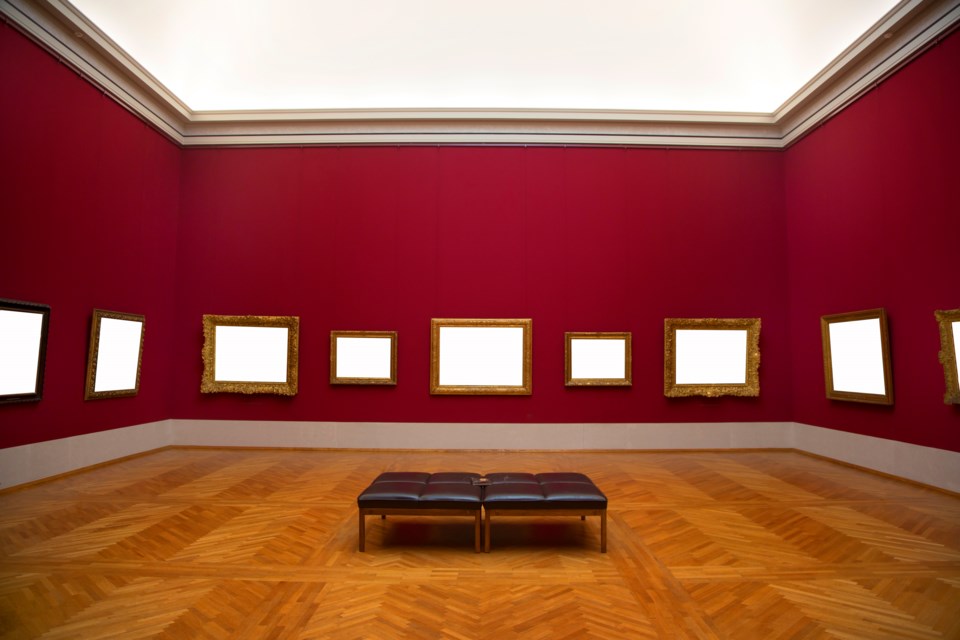STACKER.COM — The global art market is undeniably a behemoth valued at $67.8 billion, according to the 2023 Art Basel and UBS . Sales increased 3% over the last year, bringing the market above pre-pandemic levels. That growth was driven by sales from the high end of the market, which have captured the public imagination. In truth, this high-priced art market works on a skewed supply and demand curve.
"The art market functions as a big consensus marketing machine," Olav Velthuis, a University of Amsterdam professor who studies the sociology of the global art market, told . "So what people do is look at quality signals." These signals can include an artist's exhibits in a museum, the collectors buying an artist's work, and what a curator says about an artist. It's word-of-mouth amplified.
It is difficult to place a value on art, yet in auction after auction, many do. Sometimes for reasons having almost nothing to do with the artwork itself. Art can be a valuable investment for the rich, a strategy to diversify their portfolio. Buyers can purchase work from a gallery at a relatively low price and sell it for much more down the road.
There is no better example of this than the , where Robert C. Scull, a New York taxi magnate, sold his 50 best abstract expressionist and pop art paintings at Sotheby Parke Bernet. The auction put post-war and contemporary art on the market, introducing the world to now-household names like Andy Warhol, Robert Rauschenberg, and Jasper Johns.
Scull's collection sold for multiple times what he paid for the works driven by smart marketing and publicity. A Cy Twombly piece he purchased for $750 went for $40,000, for example. Since then, the market has gone into overdrive, selling artworks for prices many of us will never see in a lifetime.
Nevertheless, great works aren't prized by a select cadre of specialists—influential art is created daily by artists with something to say. Look beyond auction houses and peruse local galleries and neighbourhood art fairs. Purchasing straight from the maker is also an excellent option that returns profits into an artist's pockets.
While you ponder your next art purchase, researched the most expensive paintings ever sold and highlighted 10 of the past decade from 10 different artists. Only confirmed sales from open auctions and private sales were considered. Data was collected from several sources, including and . Court records, articles, auction house archives, and official documents were also reviewed.
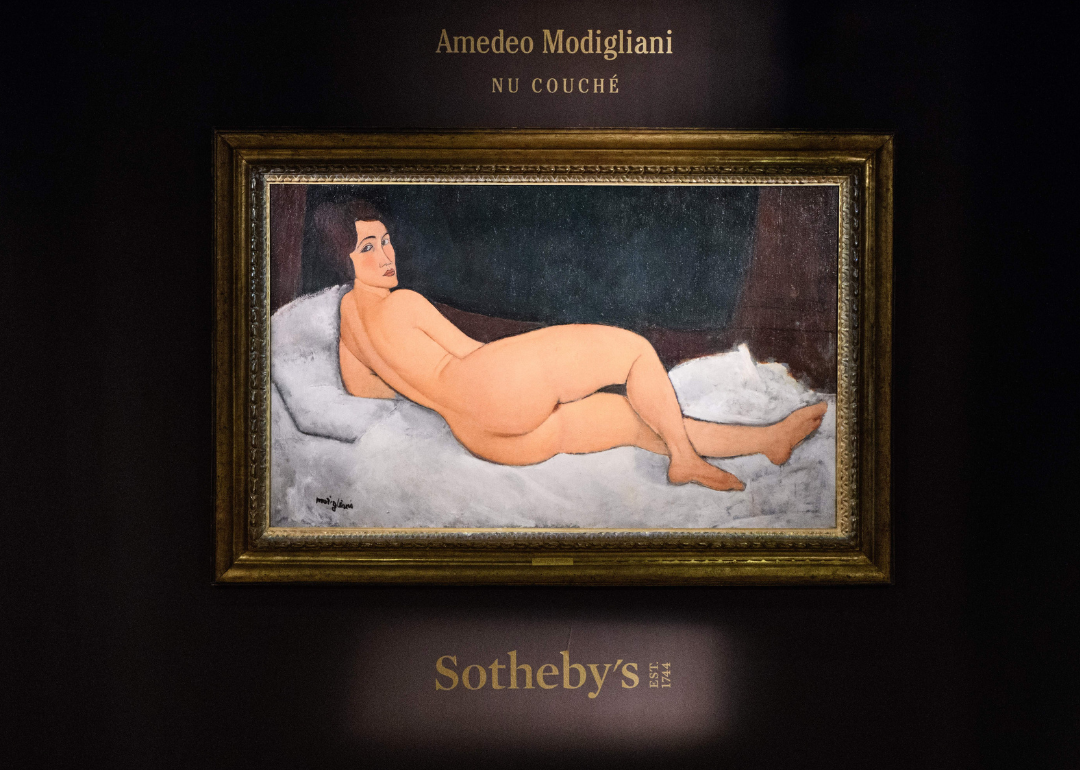
'Nu couche (sur le cote gauche)' by Amedeo Modigliani
- Selling price: $170.4 million
- Inflation-adjusted price: $199.5 million
- Painted in: 1917-1918
- Sold in: 2015
Amedeo Modigliani's "Nu couché (sur le côté gauche)," a sprawling oil on canvas nude, is the largest work in a series of 22 modern nudes in repose and shows the entire female figure. The ever-controversial piece was acquired by Shanghai billionaire couple Liu Yiqian and his wife Wang Wei, who purchased it for their Long Museum. The sale became the second-highest price ever paid at auction.
According to Christie's, the piece caused outrage when the in Paris exhibited it in 1917. Police called the painting "an offense against public morals" and demanded the gallery remove the artwork. Even in the 1950s, the New York postal office decided against featuring it on a postcard.
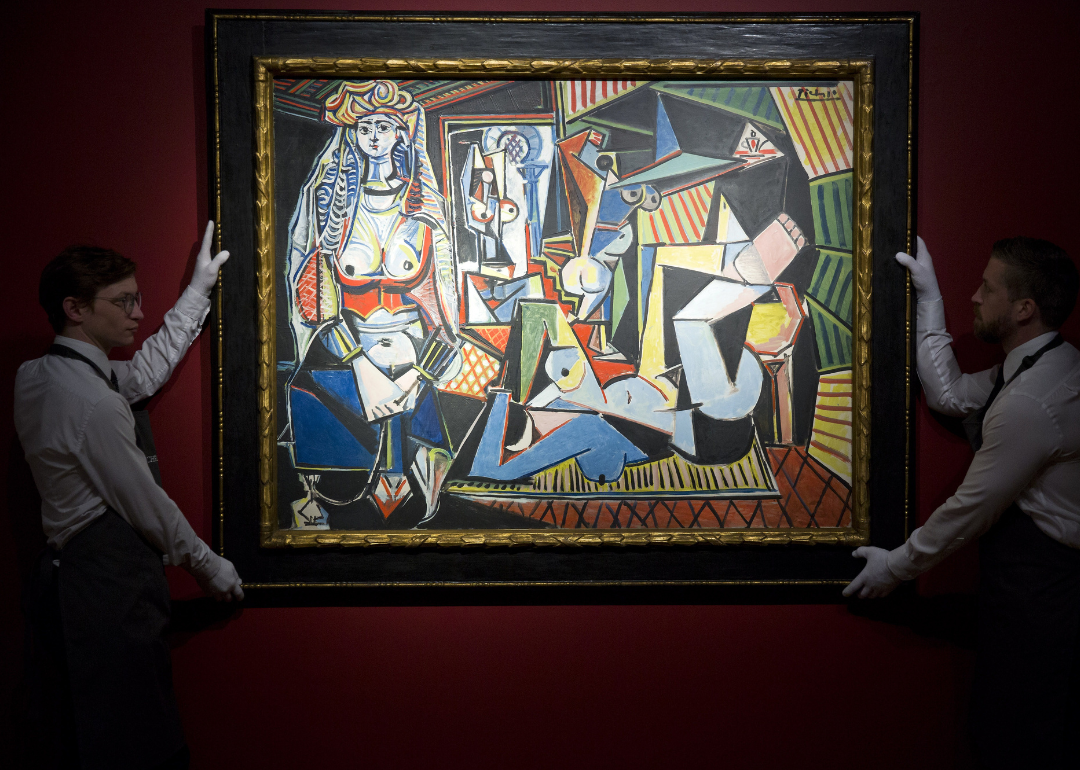
'Les Femmes d'Alger (Version 'O')' by Pablo Picasso
- Selling price: $179.4 million
- Inflation-adjusted price: $209.7 million
- Painted in: 1955
- Sold in: 2015
Pablo Picasso's vibrant "Les Femmes d'Alger (Version "O")" sold for a world auction record at Christie's for any work of art. According to , Picasso's masterpiece was property from a distinguished fine art gallery in Paris that Victor and Sally Ganz, known Picasso connoisseurs acquired.
The sale smashed the artwork's previous sales price of $31,902,500. The oil on canvas painting displays Picasso's signature cubism and vibrant colour at the forefront and is said to be a lament to Matisse, his friend, and great artistic rival. It's part of Picasso's series on the that consisted of 100 studies on paper and 15 paintings.
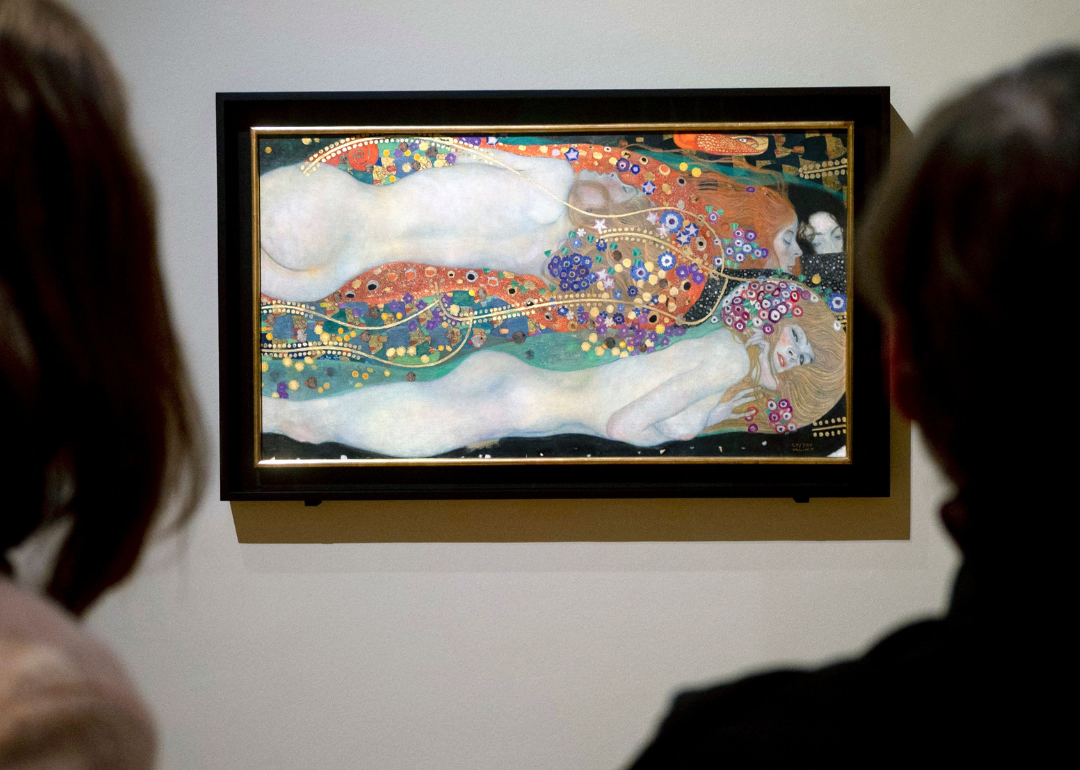
'Wasserschlangen II' by Gustav Klimt
- Selling price: $187 million
- Inflation-adjusted price: $222.6 million
- Painted in: 1907
- Sold in: 2013
Controversy shrouds Klimt's highly detailed "Wasserschlangen II" or "Water Serpents II." The oil painting, depicting intertwined nude enigmatic female imagery and a red serpent flowing horizontally, had been seized by Nazis from the painting's original owners––the Steiner family––in Austria.
, a filmmaker and director through many Austrian cinematic eras, from silent movies to Nazi propaganda films, acquired "Wasserschlangen II" along with other Klimt pieces and left the collection to his third wife.
It's said Ucicky is the illegitimate son of Klimt, and his widow Ursula Ucicky sold the painting through in 2012, with the Steiner heirs supposedly receiving half of the selling price. Art dealer purchased the painting and sold the piece to Russian oligarch Dmitri Rybolovlev. The two and Sotheby's have been in ongoing over fraudulent inflated art deals, including the Klimt masterpiece and involvement.
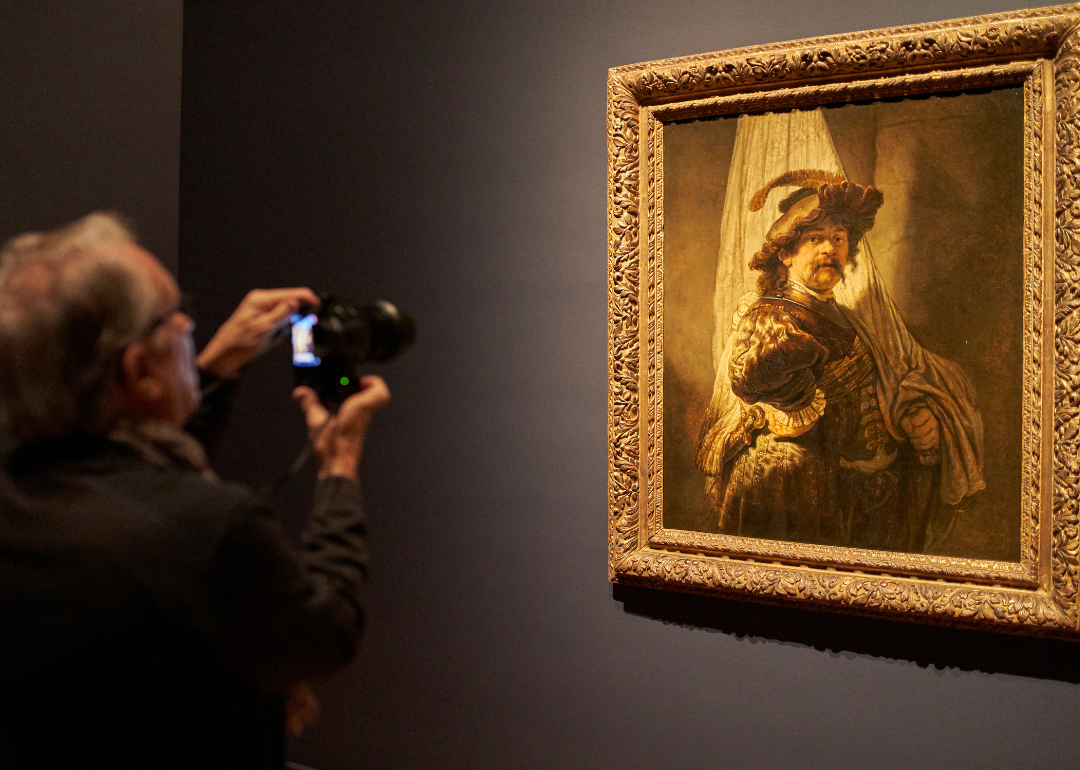
'The Standard Bearer' by Rembrandt
- Selling price: $197.9 million
- Inflation-adjusted price: $197.9 million
- Painted in: 1636
- Sold in: 2021
Long held by the Rothschild family, was purchased by the with the support of the Rijksmuseum and the Rembrandt Association. According to the Rijksmuseum, the painting was owned by private collectors, including England's King George IV and the Rothschild family, who acquired the piece in 1844.
The masterpiece depicts Rembrandt as dressed in the grand outfit of standard bearers. These militiamen were at the front line in 17th-century wars and played a crucial role in the Eighty Years' War, which eventually birthed the independent Netherlands. As such, the painting harkens back to the country's birth story.
The work is a precursor to Rembrandt's "The Night Watch." After a tour of 12 museums in 12 provinces in the Netherlands, the historic painting will permanently enter the Rijksmuseum collection in Amsterdam. The tour concludes in May 2023.
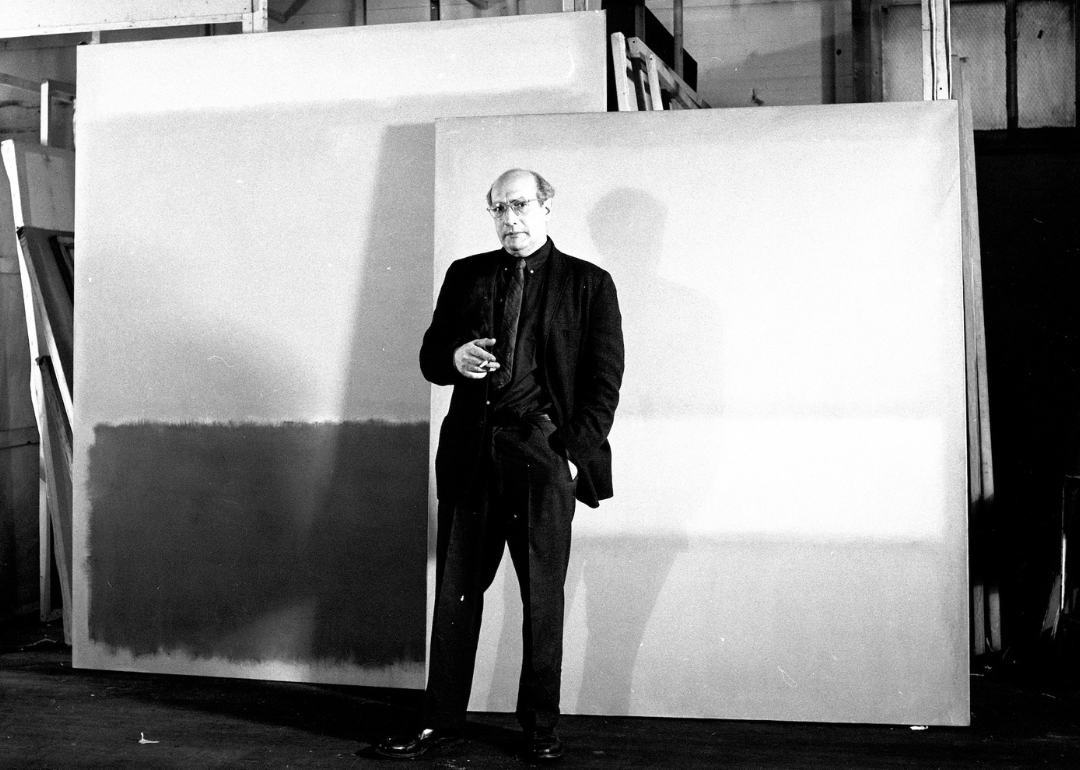
'No. 20 (Yellow Expanse)' by Mark Rothko
- Selling price: $200 million
- Inflation-adjusted price: $233.2 million
- Painted in: 1953
- Sold in: 2014
At 10 feet tall and 15 feet wide, Rothko's luminous 'No. 20 (Yellow Expanse)' was sold via a private sale. The abstract piece belonged to Rachel Lambert "Bunny" Mellon, an American , philanthropist, art collector, and wife of philanthropist Paul Mellon.
Mellon is responsible for helping Jackie Kennedy, a close friend, redesign the famous . Mellon had and even purchased unstretched pieces from the artist's studio floor. According to Sotheby's, who helped facilitate the private , Mellon owned nine large-scale paintings from Rothko's estate.
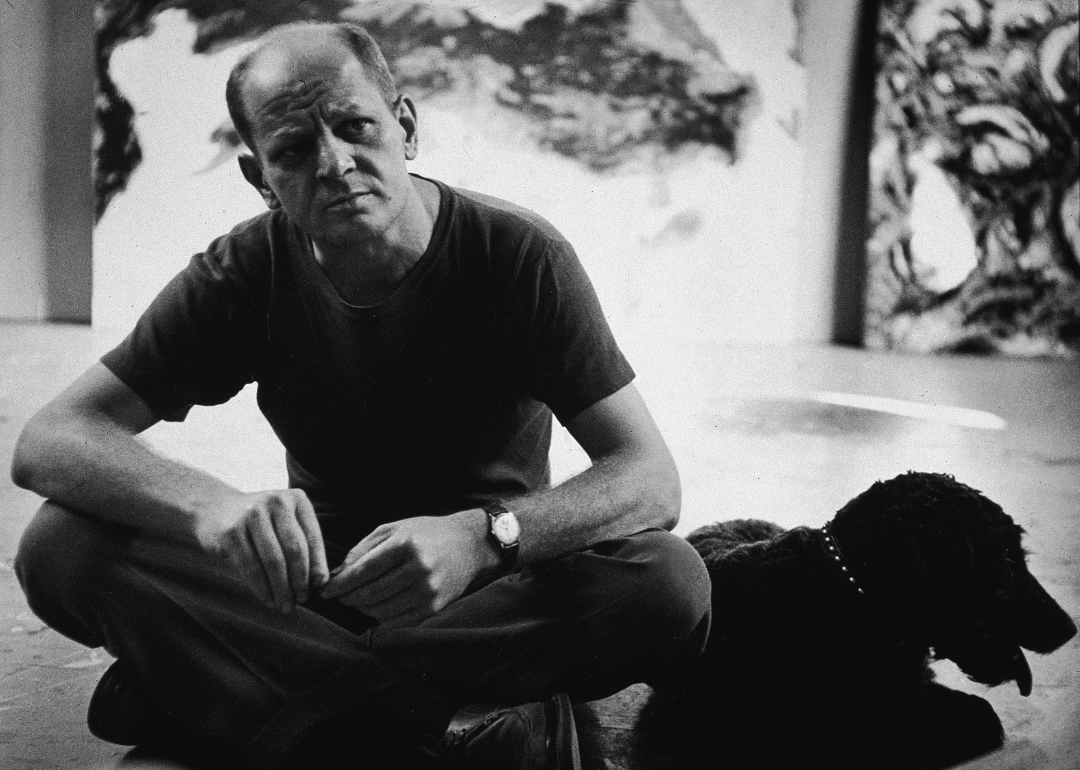
'Number 17A' by Jackson Pollock
- Selling price: $200 million
- Inflation-adjusted price: $233.3 million
- Painted in: 1948
- Sold in: 2015
Jackson Pollock's improvisational and abstract flinging techniques became known as his "drip paintings." Pollock's recognizable fluid expressionism comes through in his "Number 17A," an oil painting on fiberboard canvas.
In 1949, "Number 17A" was one of three paintings featured in a magazine article, "Jackson Pollock: Is He the Greatest Living Painter in the United States?" Pollock is now regarded as among the 20th century's great artists. "Number 17A" was sold in a by the David Geffen Foundation to hedge fund investor and Citadel founder Kenneth C. Griffin.
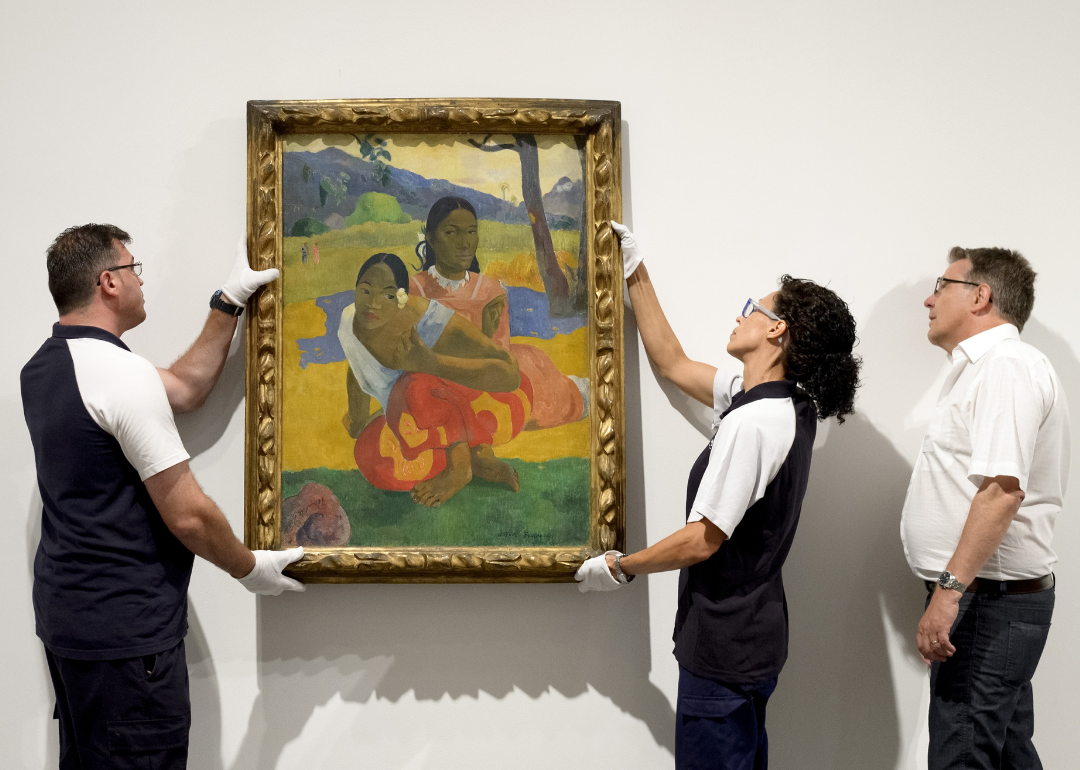
'Nafea faa Ipoipo? (When Will You Marry?)' by Paul Gauguin
- Selling price: $210 million
- Inflation-adjusted price: $247.2 million
- Painted in: 1892
- Sold in: 2015
"Nafea faa Ipoipo? (When Will You Marry?)" was included in Gauguin's Paris exhibition of 1893 at Galerie Durand-Ruel, listed for the extraordinary price of 1,500 francs––but it did not sell. However, that didn't hurt its prospects in the 21st century when it sold for millions in 2015.
The painting shows two Tahitian women, one dressed in a colorful wraparound skirt with a flower in her hair, turning away from another woman dressed in a missionary-style dress. Some believe the painting alludes to the changes happening on Tahitian lands under French rule.
This first visit to Tahiti resulted in some 60 canvases of Tahitian life, 37 of which were eventually exhibited in Paris. Gauguin died in 1903 at the age of 54 from a morphine overdose. Rudolf Staechelin, a former Sotheby's executive, sold the painting from his family trust of impressionist and post-impressionist works in a private sale. A followed the deal, stating the oil painting sold in 2014 for $90 million less than .
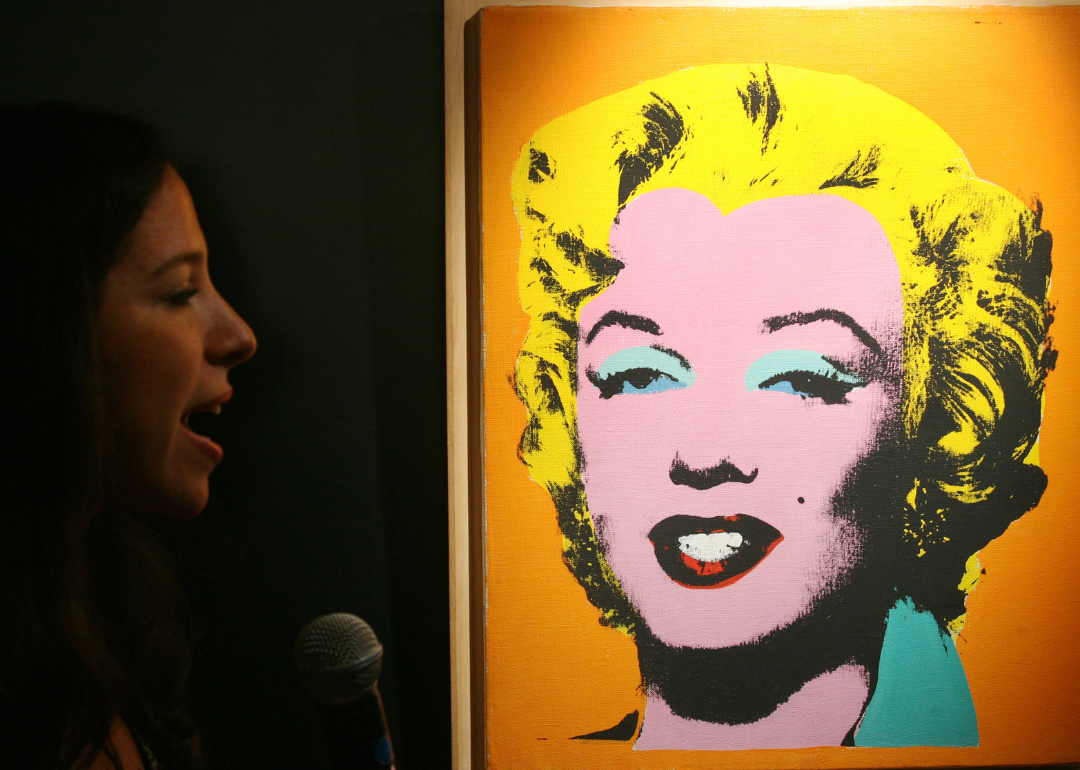
'Orange Marilyn' by Andy Warhol
- Selling price: $225 million
- Inflation-adjusted price: $248 million
- Painted in: 1964
- Sold in: 2018
Andy Warhol's pop art often embraced celebrity culture, best exemplified by Marilyn Monroe as his muse for his iconic "Orange Marilyn." The piece is modelled after a publicity image of Monroe from the 1953 film "Niagara."
According to , Warhol began his Marilyn series soon after Monroe died in Los Angeles at 36 years old. In using Monroe's image, Warhol embraced her as a true media product. Warhol eventually produced 12 single images of Marilyn informally titled according to flavour: "Cherry Marilyn," "Grape Marilyn," and "Mint Marilyn," among them. "Orange Marilyn" silkscreen sold privately to art collector and financier Kenneth C. Griffin.
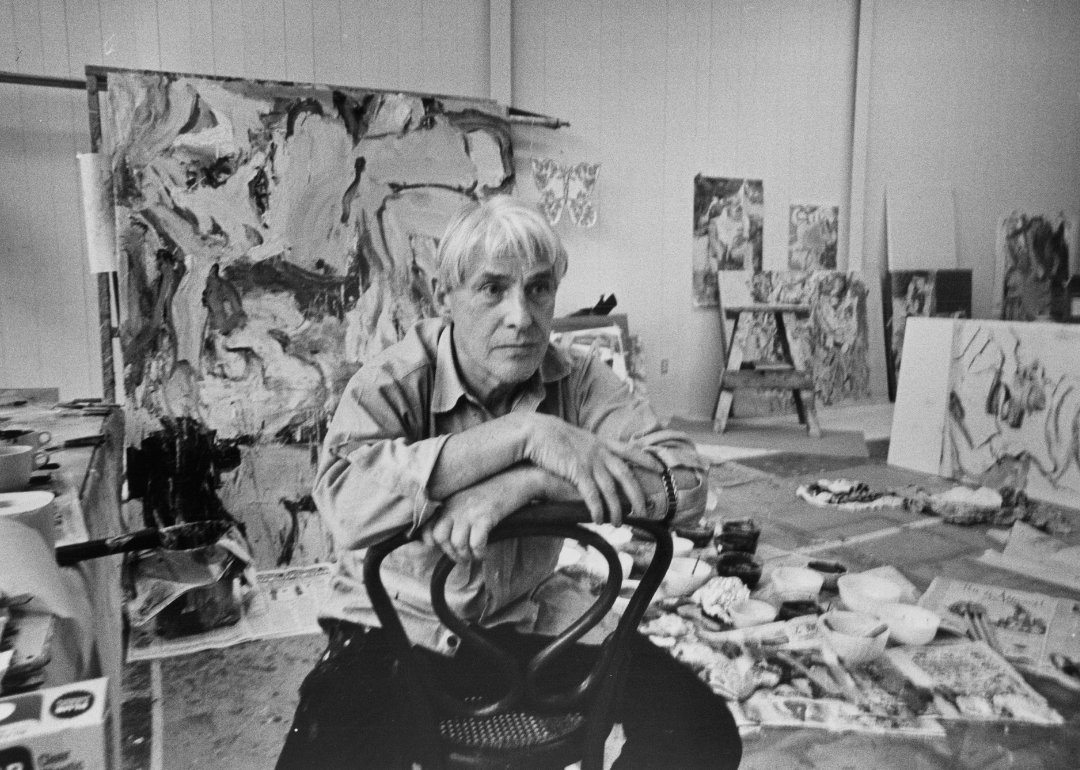
'Interchange' by Willem de Kooning
- Selling price: $300 million
- Inflation-adjusted price: $350.4 million
- Painted in: 1955
- Sold in: 2015
Willem de Kooning sold his abstract expressionist on canvas, " in 1955 for $4,000. Kooning's oil painting features quick gestural marks with emphatic light and colour depicting a landscape. Eventually, the David Geffen Foundation sold "Interchange" to Kenneth C. Griffin in a that included Andy Warhol's "Number 17A."
According to , both paintings were displayed at the Art Institute of Chicago, where Griffin was a trustee, then quietly moved to the Norton Museum of Art in Florida.
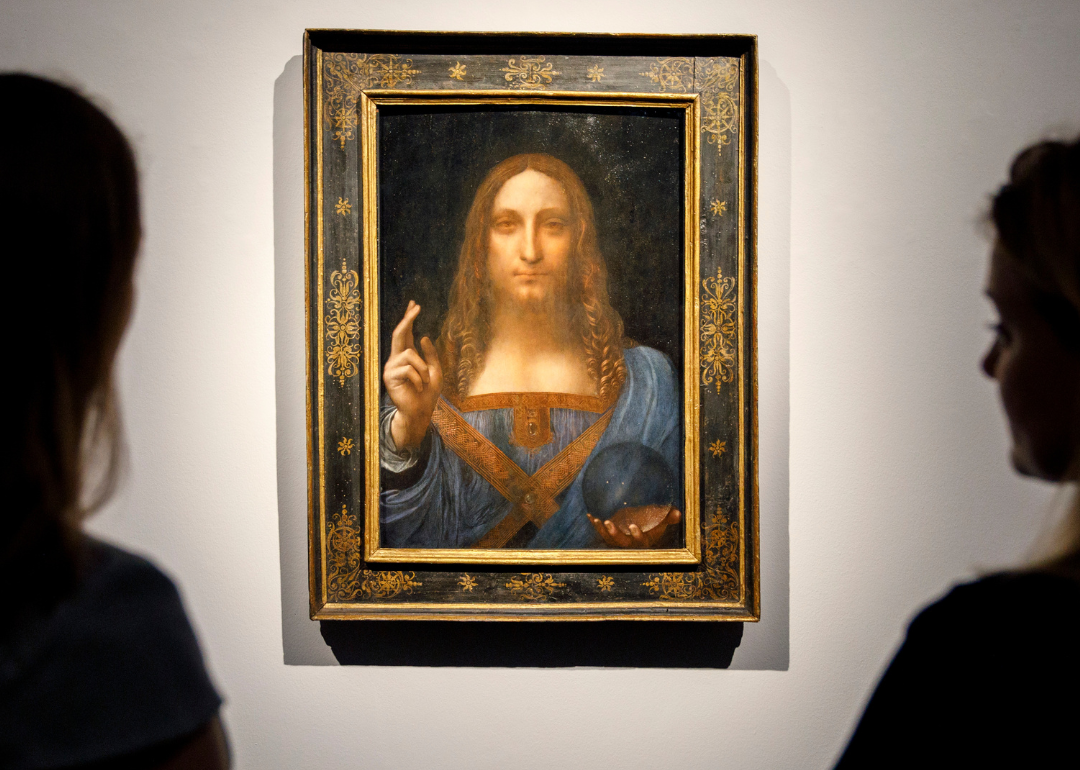
'Salvator Mundi' by Leonardo da Vinci
- Selling price: $450.3 million
- Inflation-adjusted price: $507.4 million
- Painted in: 1490-1519
- Sold in: 2017
According to the "Salvator Mundi" , the emotive oil on canvas was commissioned by King Louis XII of France and his wife, Anne of Brittany, following the conquest of Milan and Genoa sometime after 1500. From there, the story of this "male Mona Lisa" painting gets murky.
Da Vinci's masterpiece depicts a half-length figure of Christ as the saviour of the world, facing the viewer and holding a crystal orb in his left hand as he raises his right in benediction. "Salvator Mundi" was traced around 1900, when it was positioned as a work of a lesser hand, Bernardino Luini.
The painting was part of an estate sale in 2005 in New Orleans, where dealer and art historian Dr. Robert Simon and his associate Alexander Parish purchased it for just $1,175. Conservator restored the piece—some say excessively—from 2005 to 2017.
In 2013, art dealer Yves Bouvier purchased the painting for $83 million and resold the piece to Russian oligarch Dmitry Rybolovlev for $127.5 million in less than 48 hours. Rybolovlev then put it up for sale at ––and sold it to an anonymous buyer.
Some speculate its secretive buyer could be the crown prince of Saudi Arabia, Mohammed bin Salman, who may have the painting sequestered on a superyacht, away from public view. Two documentaries, "The Lost Leonardo" and " The Saviour for Sale," examine the painting's strange story.
This story originally appeared on and was produced and distributed in partnership with Stacker Studio.
